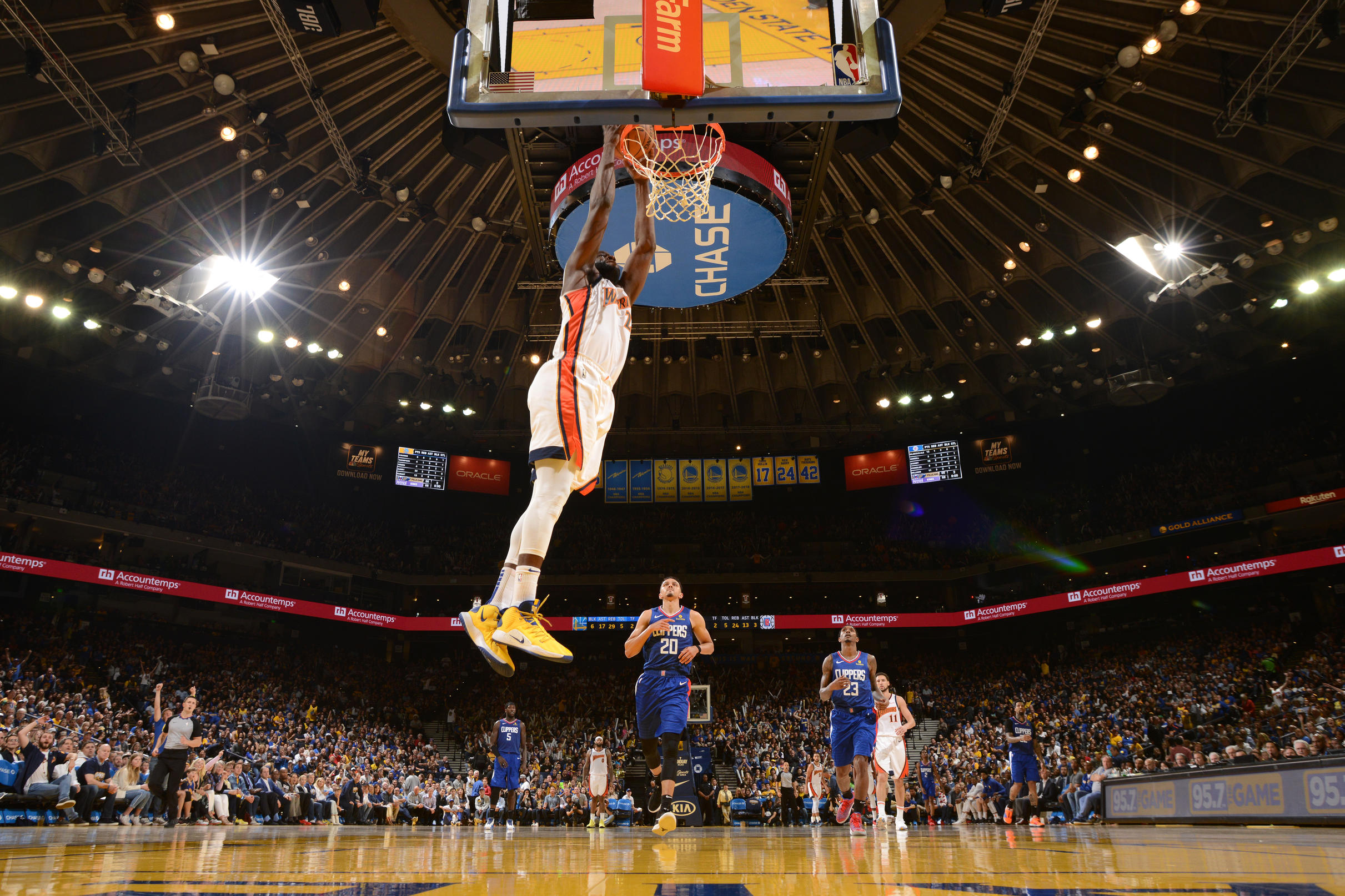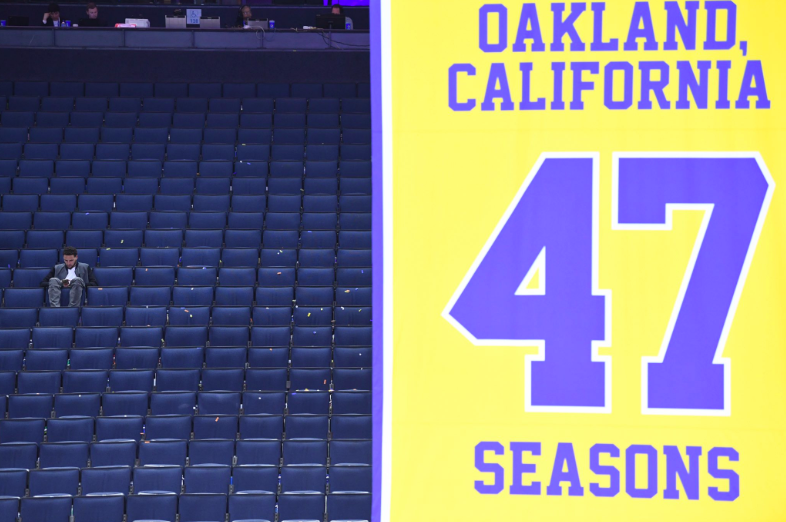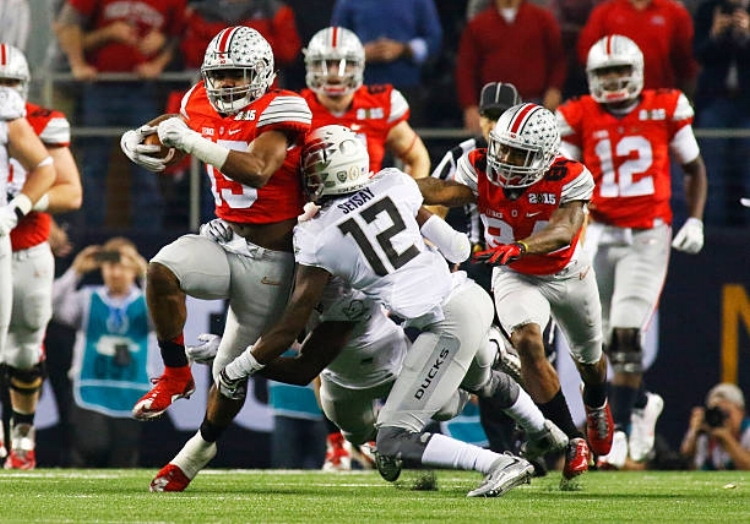“From Seaside to The Hilltop” - Jamaree Bouyea’s steady rise to stardom at the University of San Francisco
/Bouyea is leading the Dons in both points (17.2) and assists (3.8) in his fourth year at USF. (Photo by Connor Buestad - Section925)
By Connor Buestad | Connor@Section925.com
University of San Francisco’s Todd Golden couldn’t contain himself, and he didn’t care much to hide it. The 35-year-old had just secured his signature win as a college head coach, in just his second year at the helm of a Division 1 program. He had beaten defending national champion Virginia and ACC royalty Tony Bennett, at a neutral site, in front of a national ESPN audience. College baskekball fans were nursing a collective 2020 Thanksgiving hangover and thirsty for a feel-good moment.
After conducting a calm and clichéd zoom call with media members discussing the biggest upset of the young college hoops season, Golden busted through the door of the Dons’ locker room, skyed for a mid-air first pump/leg kick and barreled into his players, setting off an onslaught of chest bumps, bear hugs and roars of raw jubilation. One of the few players not filming the celebration on their iPhone quickly found a bucket of water to douse their coach with. By night’s end, the scene had gone viral, airing on loop during that night’s episodes of SportsCenter.
The only person that somehow kept this cool in that crazed USF locker room after beating UVA that day was senior point guard Jamaree Bouyea. His #1 jersey already removed, with a towel around his neck and his trusted Kobe’s on his feet, Bouyea was seemingly in a zen state the entire time, seated with two feet flat on the floor in the corner of the room. His head bowed and his face grinning with contentment, Bouyea couldn’t help but sit and contemplate the long road that got him to that moment and wonder quietly what was about to come next.
“To tell you the truth I wasn’t too surprised when I saw all that,” explains Bouyea’s notoriously supportive mom, Janine. “It’s been that way since he was little. He’s always been focused on what’s next in life, and how he’s going to get there. That’s just kind of been his style.”
--
After starting a total of 11 games in his first two seasons at USF, Bouyea is now leading the Dons in minutes played for the second straight year. (Photo courtesy of USF Dons Athletics - Christina Leung)
It’s no exaggeration to say that nothing has been given to Bouyea over the course of his basketball journey, only earned. In his most recent trip to play at top ranked Gonzaga inside an empty Kennel in Spokane, the announcing crew wondered aloud how and why Bouyea only received one D1 scholarship offer out of Palma High School in Salinas, as he dropped 16 first-half points against heralded freshman Jalen Suggs, a consensus NBA lottery pick for 2021. The suspicions grew with every buttery pull-up three pointer, every calculated slice through the lane, every thoughtful set-up pass to an unsuspecting teammate for an easy bucket. “How do you pass up on such a complete player like this?” they kept asking.
To his credit, Jason Hieb knew all along that “Jamaree was just special.” When you talk to Hieb, the head of Seaside’s Finest AAU basketball program on the Monterey Peninsula, he uses the term special when describing Bouyea at an alarming rate. The word is used constantly when he tries to describe the quiet kid from Seaside that put his basketball program on the map for good. Other adjectives pop up during the course of conversation, yes. But eventually, Hieb will give up and say “I don’t know what to tell you man, the kid is just special. That’s the best way I can describe it.”
Jamaree was just 3-years-old when he first met Hieb inside Seaside High School’s gym. Hieb was busy coaching Jamaree’s older brother Jonquis, who was the star guard on Hieb’s under-8 Seaside team, alongside Hieb’s own son Kyle of the same age. As Hieb tried and failed to convince a group of 7-year-olds to pass and screen away on offense and maybe come to a two-foot jump stop once in a while, he couldn’t help but notice the toddler on the sideline, laser focused on what was happening on the court out in front of him. “He would just watch, man. Watch for hours. One of the most focused and observant kids I’ve seen walk into my gym. Eventually we gave him a ball to bounce around on the sideline, but even after that he would spend a lot of time watching the older kids, just learning on his own. For a kid that young, it was kinda special, to be honest.”
Growing up in a household that included his father Stan, eldest brother Keevin and his middle brother Jonquis, Jamaree developed a passion for sports at a very young age. Whether it be baseball, soccer, or basketball; you name it, if it was happening, Jamaree was desperate to be involved and emulate his older brothers. “I remember I had this old beat up truck at the time,” explains Hieb. “There was really no room for Jamaree, but he insisted that we let him lay down on the floor of the truck if I was ever driving to a game. He could care less if there was a seat for him. He was just always around, no matter what.”
By the time Jamaree was in middle school, basketball became his main focus, as his dream to play college basketball began to crystalize. His entire weekends were spent solely at the Monterey Sports Center, where his mom bought him a membership. “I never really saw him on the weekends during those years, he was just always there playing basketball with his friends,” says Janine.
When he wasn’t at the Sports Center, Jamaree was with Coach Jason at an AAU tournament somewhere across the western United States. Jonquis, who later played at Cal State Monterey Bay, had helped pave the way and set the tone for the Seaside’s Finest program, but Jamaree was waiting in the wings to take it to a whole new level. “Jamaree was always a bit shy, always kind of a nice kid who didn’t want to step on anyone’s toes in my program. For instance, he didn’t necessarily want to play up in age group, he was always willing to wait his turn, wait for his time to shine,” says Hieb. Eventually, that time arrived.
Traditionally relegated to the back courts of the prestigious AAU tournaments of L.A., Georgia and Las Vegas, with Bouyea as his point guard and the requisite clout under his belt as a coach, Hieb started to demand prime time slots for his Seaside’s Finest team. It was time to play the best players from around the country, in front of the big time coaches, no matter the results. “I got us in these games we might have had no business being in. Jamaree would be getting pressed by some of the best teams in the county and he would just look at me sweating it out and say ‘I got you coach’ and just take care of it. He always had a way of taking control of a chaotic situation in a cool manner,” remembers Hieb.
--
Like his older brother Jonquis, Jamaree spent countless hours playing for his local AAU team, Seaside’s Finest. (Photo courtesy of Seaside’s Finest)
Despite years under his belt putting Seaside’s Finest on the map at the time and Hieb’s role as JV coach at Seaside High School, when it came time to pick a high school to attend, the choice was solely Jamaree’s. After much deliberation, Bouyea chose to be the first member of his family to attend Palma High School, a private school in Salinas, known in the county for its athletic excellence and its varsity basketball coach at the time, Paul Alioto. “It was really tough to leave all my middle school friends and go to Palma, but I knew this was my best shot to make college basketball happen for myself, so I took the opportunity and tried to make the most of it,” said Bouyea.
After arriving on campus as a freshman, Bouyea was still largely undersized and still in dire need of a serious growth spurt if his dreams of D1 basketball had any hope of working out. After tryouts, Jamaree was relegated to the freshman team, deemed not even good enough for a 6th man role on the JV’s. Moreover, the freshman team implemented an “everyone plays” type rotation where Jamaree’s starting group had just five minutes on the court before the next substitution cycle. The slice of humble pie was larger than Jamaree could have expected.
Still, his calm and poised demeanor prevailed and Bouyea sought out every opportunity to prove himself and capitalized on it. During a holiday tournament as a freshman, his coach half-jokingly guaranteed the team a free meal at Foster’s Freeze if the team won the championship. Jamaree went ahead and won it. By January of his freshman year, he was finally bumped up to JV and his new team never lost a game for the rest of the season. Still, the year ended on a bittersweet note, as coach Alioto announced he was leaving the school at the end of the year.
Alioto was replaced by Kelley Lopez and the Bouyea family welcomed him with open arms. In his first three years with the program, Lopez and Bouyea teamed up to go 76-16, never losing a league game in three years, twice making the NorCal Finals and once making the State Championship game at Arco Arena in Sacramento as a junior, only to fall short to Duke’s Cassius Winston of Harvard-Westlake in Los Angeles.
Even while compiling one of the greatest high school basketball careers in Palma HS history and starring for Seaside’s Finest formidable AAU program, the D1 offers didn’t exactly start pouring in for Bouyea as he put together league MVP seasons and runs to the state title game in the capital. In fact, not one offer came in. “To be honest, I can’t tell you exactly why,” says Bouyea, days after his 18-point performance at Gonzaga. “When I would go to summer camps at places like Stanford and UOP, I would just kind of play my role on the team. Everyone would tell me to try to take over more and score as much as possible, but that just wasn’t my style as a point guard.”
By the time Bouyea’s senior year of school rolled around, Hieb started to wonder if it was too late to be thinking D1 any longer. “There’s a certain point where you just need to go where you are wanted. You can’t wait forever,” he explained.
It was the eleventh hour of the recruiting process when the USF coach at the time, Kyle Smith, invited Jamaree to the Hilltop to take an official recruiting visit. Smith had coached Palma graduate E.J. Rowland during his days as an assistant at Saint Mary’s College and figured Bouyea could be built from the same mold, so he took a flyer on a player so many others didn’t even bother to look at. Less than a week later, Jamaree interrupted one of his pickup games at the Monterey Sports Center to take a cell phone call from a number he had recently saved in his phone. It was Coach Smith, offering Jamaree his only D1 scholarship. The answer was an immediate “YES,” followed by a call to his parents, then finally a return to his pickup game with his friends to finish what he had started.
--
In three varsity years at Palma High School in Salinas, Bouyea never lost a league game. (photo by Ted Walker - MaxPeps.com)
Much like in high school, Bouyea arrived as a freshman on campus in San Francisco ready to play for an accomplished coach, with hopes of being an impact player, catapulting him to a new level of basketball. But just as was the case at Palma, Bouyea found himself at the fork of a longer road than he had imagined. While the elite freshmen of his class around the country were starting right away, getting almost all the shots they wanted and counting down the days to NBA pre-draft workouts, Bouyea was relegated to the bench on a middle-of-the-pack WCC team. He only averaged 2 points and 13 minutes played per game, stuck behind his freshman roommate Souley Boum from Oakland Tech HS as well as star junior PG Frankie Ferrari. By the end of the year the Dons were 9-9 in league play and Boum had decided to transfer out of USF. His best friend on campus was gone.
After a sophomore year in which Bouyea mustered just 6 points per game as a backup, the one major college basketball coach who gave him a scholarship offer was headed out the door as well, headed for a job in the Pac-12. Still, Bouyea never thought about leaving himself. “USF was the first school to believe in me and I knew if I kept improving every year I could become a starter here. I knew Coach Golden would run a similar program to Coach Smith. It didn’t make much sense to me to start over somewhere else where the coaches didn’t know me,” said Bouyea.
--
Bouyea’s assist/turnover ratio as a senior is 1.5, while Gonzaga’s Jalen Suggs has a 1.6. (photo courtesy of USF Dons Athletics - Christina Leung)
Now in his senior year as a Don, Bouyea is the face of a program that is on the rise, in a conference that has never been better, averaging a team-high 17 points a game. Sadly, players like him in college basketball are nearly extinct. As much as Bill Walton, Dick Vitale and Jay Bilas would hate to admit it, the 4-year senior who stays at the same school, getting better every year and improving himself into an all-league player is no longer the rule, but rather the exception. And with a new ruling stemming from Covid-19, Bouyea even has a free fifth year of eligibility on the table at USF waiting for him if he wants it. In so many ways, he’s the last of a dying breed of basketball players: one AAU program, one high school, one college, all for four (maybe five) years.
You won’t find Bouyea on any NBA mock-draft boards, but you didn’t see Matthew Dellavedova or Patty Mills on many draft boards either and they’ve each cut out long NBA careers for themselves after shaping their skills in WCC gyms such as War Memorial in SF. Even the prospect of playing overseas is something few thought possible for Bouyea when he struggled to get a sniff from college coaches coming up through the ranks. His most valuable skill might be finding out what’s next and figuring out how he’s going to get there.
--
USF has been to the NCAA Tournament 16 times, but it’s been 23 years since the Dons last went dancing. (photo courtesy of USF Dons Athletics - Christina Leung)
Despite 16 appearances in the NCAA Tournament and two National Championship titles in the 1950’s led by K.C. Jones and Bill Russell, San Francisco hasn’t been to the Big Dance since 1998. They find themselves in a precarious position. In a league that is rarely granted more than two tournament bids, Gonzaga and their current #1 national ranking always takes one bid, leaving BYU, Saint Mary’s and the rest to scramble for seconds. For the fourth straight year, Bouyea finds himself on a team trying to keep tournament hopes alive in a league filled with elite recruits from both stateside and around the world. Despite the odds, Bouyea’s trusted youth coach still believes he can somehow sneak the Dons back into a March Madness bracket before his time on The Hilltop is complete.
“It obviously would be really special for our program if we could get back into the tournament after all these years,” says Bouyea as he discusses the ups and downs of his basketball career. “I remember being driven to the Sacramento Kings arena when I was in 8th grade I think. There weren’t too many people in the stands, but Mater Dei was playing for the state title with Stanley Johnson. It was an awesome atmosphere. I remember Coach Jason (Hieb) gave me some popcorn to share and I just sat there staring at the game, watching Stanley, hoping one day I’d play in games like that. I ended up eating the entire thing of popcorn by myself,” he explains with a smile. “Yeah,” he continues. “I definitely still owe Jason a whole bucket of popcorn to this day.”
Bouyea skies for a dunk in recent game at War Memorial Gym in San Francisco. (photo courtesy of USF Dons Athletics - Christina Leung)
E-mail section925: connor@section925.com













































